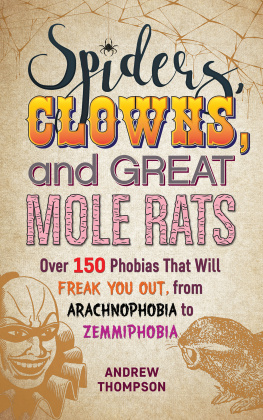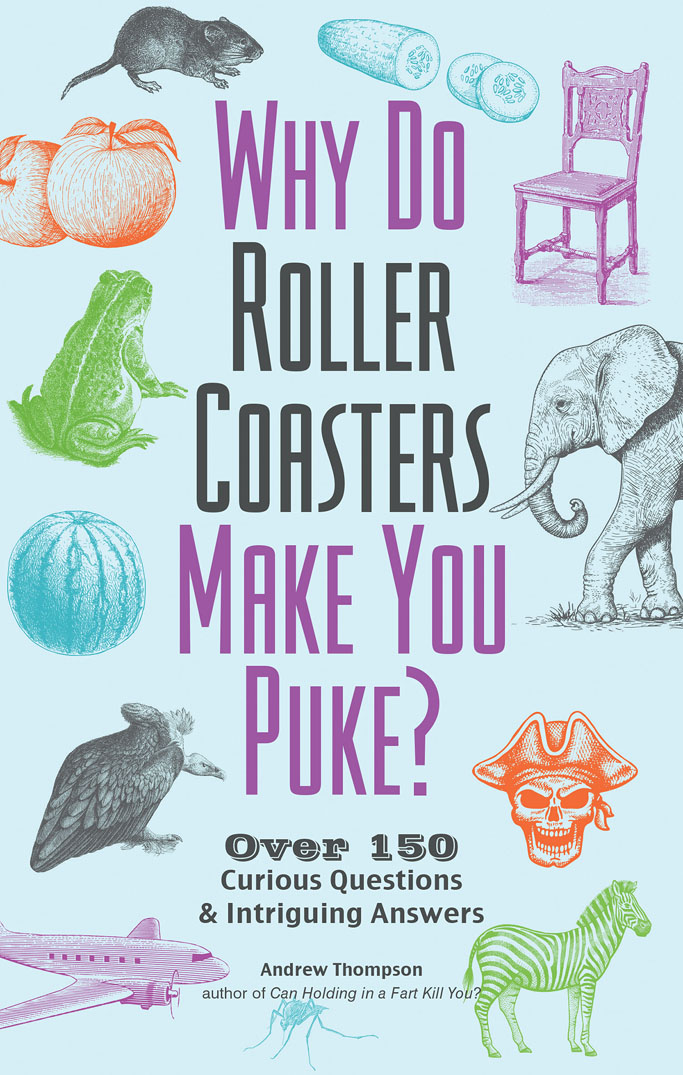Table of Contents
Guide

Andrew Thompson divides his time between Australia and England. A lawyer by trade, his obsession with finding out the truth about aspects of the world that we take for granted has led him to accumulate a vast body of knowledge, which he has distilled into book form.
He is the author of the three Ulysses Press best sellers: What Did We Use Before Toilet Paper?, Can Holding in a Fart Kill You?, and Hair of the Dog to Paint the Town Red. See all of Andrews books at www.andrewthompsonwriter.co.uk or at Twitter @AndrewTWriter.

Cockroaches are resilient creatures that have lived on earth for 300 million years, predating the dinosaurs by 150 million years. After atomic bombs were dropped on Hiroshima and Nagasaki in 1945, reports later emerged that the only survivors in the cities were cockroaches, whose populations seemed largely unaffected. This led many to believe that roaches can survive nuclear bombs. So, can they, or is this just another urban myth?
To test this theory, various scientific teams have conducted experiments on cockroaches over the last 60 years, exposing them to the radioactive metal cobalt-60, a synthetic substance produced artificially in nuclear reactors. After an exposure of 1,000 radon units (rads), which was the level of radiation detected about 15 miles from Hiroshima directly after the bomb was detonated, capable of killing a person in 10 minutes, most cockroaches survived, although their fertility was severely compromised. After exposure to 10,000 rads, the amount of radiation emitted by the Hiroshima bomb, only one in ten cockroaches survived, and at a level of 100,000 rads, no cockroaches lived.
The ability of cockroaches to withstand extreme radiation owes to the simple design of their bodies and their relatively slow cell cycles. Cells are most sensitive to radiation when theyre dividing. The cells of a cockroach divide about every two days, and the insects molt only once a week. The cells of humans, on the other hand, are constantly changing and renewing, making us 10 times more susceptible to radiation than cockroaches.
Cockroaches, however, are nuclear lightweights compared with others in the insect world. It takes 64,000 rads to kill the fruit fly, 100,000 rads to kill the flour beetle, and the Habrobracon, a type of parasitic wasp, can withstand an astonishing 180,000 rads.
In short, while cockroaches would not be able to withstand the direct impact of an explosion, some would be able to survive the radiation produced by a blast on the level of the Hiroshima bomb. They wouldnt survive the far more powerful bombs of today, but theyre still impressively hardy bugs. This begs the question: Just how strong is the stuff they put in bug spray, anyway?

Everyone has experienced the frustration of a phantom traffic jam. The traffic just seems to stop for no apparent reason, and by the time youre moving freely again, you cannot see what might have caused itthere is no accident, no roadwork, no police interference. So, why do these jams happen?
If there are enough cars on a highway, any minor disruptions to the flow of traffic can trigger a chain reaction. All it takes is for one car to brake unexpectedly. A driver might get too close to the car in front, look at the scenery and lose concentration, change lanes in front of another car, or slow because of a bump in the road. The driver then brakes slightly, forcing the unsuspecting drivers behind to react with their own brakes so they can stay at a safe distance. A ripple effect occurs and the braking amplifies backward. Its like a shock wave that becomes more pronounced as it works its way back until a traffic jam is produced.
A phantom traffic jam will take longer to dissipate than it takes to develop, and as you drive forward, the effects of the jam move backward. The front of the jam clears, and by the time the cars at the back are moving freely again, the road in front is almost empty and drivers are left wondering what the problem was in the first place.
A 2008 experiment conducted by Professor Yuki Sugiyama, the head of the Mathematical Society of Traffic Flow at Japans Nagoya University, had 22 cars drive on a circular road. A phantom traffic jam was soon created, the cars piling up in under a minute. The study showed that the solution to the problem is all about speed and spacing. When people drive a little slower and keep a bigger space between themselves and the car in front, the snowballing effect of sudden braking is avoided and fewer traffic jams occur.
Generally seen as something negative, envy is an emotion that occurs when a person desires anothers superior possessions, achievements, or qualities, or wishes that the other person didnt have them. Thought to be one of the main causes of unhappiness in people, envy is often associated with the color green. But do people actually turn green with envy? How did this idea come about?
The idea of turning green with envy began in ancient Greece. The Greeks believed that various illnesses, along with what they termed restless emotions, were accompanied by an overproduction of bile, which lent a pallid green color to a persons complexion. In the 7th century, the Greek poet Sappho described a stricken lover as being green.
This idea persisted through the ages and was eventually brought to the mainstream by Shakespeare, who popularized the concept in two of his works. In his 1603 play Othello, he wrote, Beware my lord of jealously. It is the green-eyed monster which doth mock the meat it feeds on. He made further reference in his 1605 play The Merchant of Venice, when he wrote, How all the other passions fleet to air, as doubtful thoughts and rash-embraced despair and shuddering fear and green-eyed jealousy!
So while the Greeks actually believed that green-eyed monsters existed, they dont. It was, in fact, Shakespeare who perpetuated the myth of turning green with envy and turned it into the expression that is still used today.
Known as musophobia, murophobia, or suriphobia, the fear of mice is one of the most common human phobias. And, since the 1941 Disney classic Dumbo, the idea that elephants are afraid of mice has long been a staple joke of cartoons. In fact, the Roman philosopher Pliny the Elder wrote in his 77 AD book Naturalis Historia, of all other living creatures, they [elephants] cannot abide a mouse or a rat. But is there any truth to this seemingly implausible suggestion?
Some say that elephants are afraid of mice because they fear the mice will crawl up their trunks, causing irritation, blockage, and breathing difficulties. However, elephant experts say there is no evidence to support this claim, and that in any event, an elephant could easily blow out and eject the mouse.
Whatever the supposed reason, a number of studies have been conducted over the years to determine whether elephants really are afraid. A series of 1939 experiments found that elephants failed to react when a mouse entered their enclosure, except when the mouse scurried over a sheet of paper. This caused some of the elephants to stand up and trumpet, perhaps spooked by the rustling noise. In a 2006 test conducted at the Ringling Brothers circus, a number of white mice were held up at eye level to various elephants. The elephants didnt react at all, and were said to look bored. But this may have been because the mice were being held, rather than racing around the elephants feet. In a more recent experiment, mice that were put into an elephant enclosure caused the elephants to stop dead and even back away and walk off in the other direction. However, scientists believe that its more likely that the elephants were merely surprised by the mice, not afraid of them.













